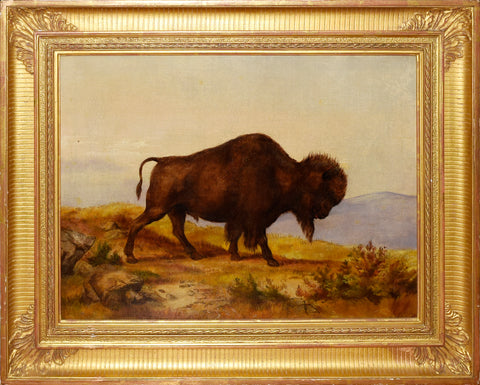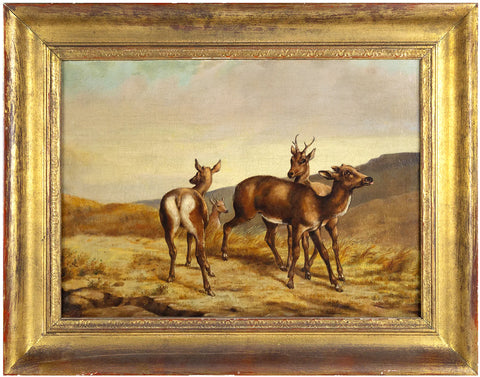![François-Auguste Biard (French, 1798-1882), Shipwreck... [View taken in Magdalena-Bay (Spitzbergen)]](http://aradergalleries.com/cdn/shop/products/biard_magdalena_painting_large.jpg?v=1517518971)
François-Auguste Biard (French, 1798-1882), Shipwreck... [View taken in Magdalena-Bay (Spitzbergen)]
A monumental canvas of Magdalena Bay, with its chain of white mountains, by French genre painter FrançoisAuguste Biard. This is an exceptional example of Biard’s ability to portray both the dramatic landscape and beauty of meteorological events in the Arctic. The artist first exhibited this work at the 1877 Salon as Les Naufragés de la Lucie-Marguerite, Vue prise à Magdalena-Bay (Spitzberg) [The Castaways of the Lucie-Marguerite, View taken in MagdalenaBay (Spitzbergen)]. It is a very fine example of the artist’s lasting passion for Arctic, as well as the public’s continued interest for these romantic scenes untouched by mankind.
François-Auguste Biard painted several compositions of the Arctic following an expedition there in 1843. Our painting, executed in 1876-77, illustrates an event that took place in 1843, as indicated in the title at the Salon. The left portion of the composition shows a beautiful aurora borealis. This phenomenon captures the spectator’s entire attention at first, before they discover the shipwreck on the right of the composition. On the right, the castaways on a rocky precipice try desperately to gain the attention of a boat in the background. The wreck seems a result of a failed sealing expedition, indicated by the iron hooked sealing gaff strewn alongside lifeless seals on the icy shore in the lower right corner of the composition. The situation is clearly dire, a kneeling man raises his arms like child begging to be lifted, several passengers are injured and carried by fellow crew members, one has died and is mourned by a man sitting and covering his head with his hands in despair, those that are able bodied try to keep the fire burning, while others wave flares, hats, and wreckage to grab the attention of the passing ship.
Biard’s fascination for grand landscapes goes back to the journeys he made in Switzerland and Scotland in the 1830s. His first painting with and Arctic theme: Embarcation attaquée par des ours blancs, was completed in 1839, before his trip to the High North. The painting was admired by Louis-Philippe at the 1839 Salon, he suggested the artist go with the scientific mission soon leaving for Spitzberg. Biard happily accepted the invitation which indulged his ardor for risk and for long journeys, he took his future wife, Léonie d’Aunet. After 14 days at sea on the ship La Recherche, the mission finally arrived in Magdalena Bay. The crew spent 13 days there, after which Biard and Léonie continued their voyage to Lapland. Biard was amazed by the variety and the splendor of the landscape and skies, as well as the impressive aurora borealis and other meteorological manifestations.
Upon his return in Paris, Biard painted a series of 18 studies showing Magdalena Bay and its aurora borealis. His vivid memories along with these studies inspired a dozen of paintings which he presented at the Salon between 1841 and 1880. The first paintings, more romantic, emphasized human frailty before the immense ice desert. The most famous being Magdalena Bay, vue prise de la presqu’île des Tombeaux au nord du Spitzberg, presented in 1841 and now kept at the Musée du Louvre, Paris. The Louvre composition is similar to our own in that it concentrates on a shipwreck lost in a large landscape surrounded by snow and mountains, under an exquisite aurora borealis. He continued this theme for his painted decoration in the Galerie de minéralogie in the Museum of Natural History, Paris: a 360° panorama showing Magdalena Bay, open to the public in 1864.
We Also Recommend





